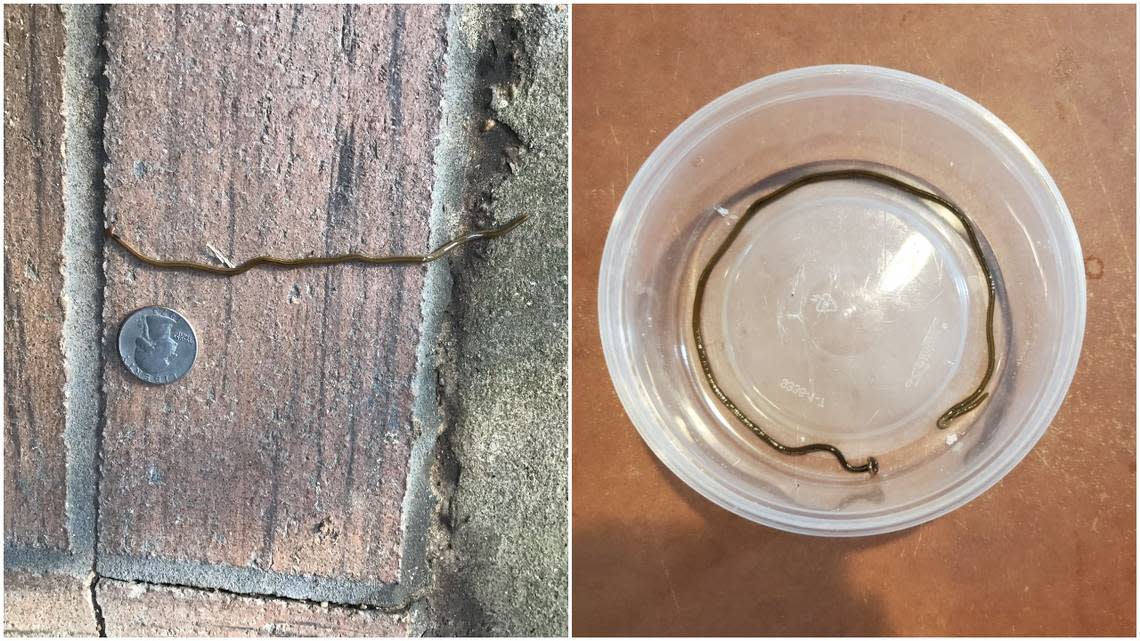They emit toxins and can respawn if you try to kill them. Meet this invasive species
They have flat, half-moon-shaped heads and long, wriggly bodies. They secrete the same neurotoxins as puffer fish and can regenerate if you try to chop them up. These are the hammerhead flatworms, and they have been drawing attention again this summer.
The invasive worms, also called shovel-headed garden worms, are native to Southeast Asia but have been in the U.S. for decades, according to the Texas Invasive Species Institute.
A map maintained by the University of Georgia shows that within the U.S., hammerhead flatworms are most common in the Southeast, with most sightings reported in Texas, Georgia and North Carolina. The most recent sighting documented in the tracker occurred in Columbia, Georgia, on Aug. 19.
The worms have also been documented in Virginia, Oklahoma and California, among other states across the country, according to the tracker.
Dr. Theresa Dellinger, an entomologist at Virginia Tech university, had firsthand experience with a flatworm in her front yard.
“It was a very weird-looking, downright strange organism,” Dellinger told McClatchy News.
The worms can reproduce via regeneration, making them hard to kill by chopping or slicing.
“At least in temperate regions, reproduction seems to be primarily achieved through fragmentation: a small rear portion of the worm will pinch off, and ‘stay behind’ as the worm moves forward,” according to the Texas Invasive Species Institute. “Within about 10 days, the head begins to form. This may happen a few times a month.”
This species can grow up to 15 inches long and have stripes on their backs, according to the institute. The worms emit a neurotoxin called tetrodotoxin that they can use to stun their prey before ingesting it or to ward off predators, NBC Chicago reported.
You might get a rash if you touch one, but the worms would not likely cause serious harm to humans, the University of Arkansas System Division of Agriculture said. Pets could potentially feel sick if they ingest the worm’s neurotoxins.
The hammerhead flatworms commonly feed on earthworms, which is why some experts are raising the alarm.
But Dellinger told McClatchy News there’s little basis to suggest the worms are cause for worry.
“We haven’t seen any real studies or research done on how they have negatively impacted earthworm populations in our area,” Dellinger said.
Many earthworms are also invasive, she added.
Dellinger said these flatworms have been present in North America for a long time. If they haven’t wreaked havoc so far, she said they’re probably not going to have more of an impact than they already have.
Other experts support a more aggressive approach to the worms.
“If you think about, you know, honeybees being vital in the chain reaction, on why we need to protect our honeybees, earthworms are necessary as well,” Ashley Morgan-Olvera with the Texas Invasive Species Institute said in an interview with NPR. “So if we had a flatworm come in and if we left them unattended, if we just let them go and eat all the earthworms that they wanted, we could have serious crop and food issues.”

If you see a worm and choose to get rid of it, do not chop it up, experts say. You will probably just make more.
The worms can be killed by spraying vinegar on them or pouring salt over their bodies, much like slugs, according to NPR. Dellinger said you can also put them in a container filled with dishwater or put them in a plastic bag and leave them in direct sunlight. But if you dispose of the worm, use gloves to handle it.
“Know what they are and how to recognize them, but don’t let that keep you from enjoying the outdoors,” she said.
A new invasive species of hornet found in US, experts say. It feasts on honey bees
Roadkill is actually ‘unique’ creature never before confirmed in Kentucky, officials say
Nope, nope, nope. Family of 10 rattlesnakes found lurking outside Arizona home
Venomous sea creature with 96 arms can turn itself inside out. See the new species
